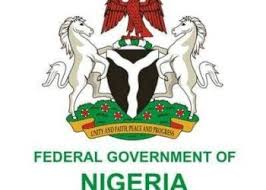Financial analysts have projected that headline inflation will increase marginal to 11.27 per cent in November from 11.26 per cent recorded in October.
Making projection ahead of the release of November inflation rate by National Bureau of Statistics (NBS) they said that this rise in the general price level would be driven primarily by a boost in liquidity, arising from FGN’s increased government disbursements and state payments to contractors.
They explained that though prices of commodities such as tomatoes and pepper recorded a decline in the review period but the anomaly in the price movement is expected to be short-lived as increased demand for festivities
The FDC economic report for the month of November anticipated a marginal increase of 0.05 per cent in the month-on-month (MoM) sub-index to 0.79 per cent, 9.92 per cent annualized, on the back of a boost in naira liquidity.
The report stated that M2 growth has increased by 6.52 per cent recently, annualized at 7.82 per cent, stressing that the time lag for the transmission effect of money supply on prices is getting shorter.
This according to them was because the velocity of circulation of money is increasing as a result of a shift towards electronic payments.
It further said that the mitigating factors of higher inflation remain an increase in output that is higher than the M2 growth, noting that the FBN’s Purchasing Manager Index (PMI) reading was up 2.4 points to 58.9 points in November and this reflects an improvement in manufacturing sector activities, indicating higher output.
They stated that in spite of the improvement in power supply, the average wholesale (depot) price of diesel increased by 13.15 per cent to N245 per liter in November and it is expected to filter through to higher logistics cost, which could drive up firms’ operating and distribution expenses.
FDC economic report stated that other mitigating factor against rise in inflation include weaker naira, stressing that currency pressures are building up at the parallel market as the naira depreciated to N374 to a dollar at the end of the month before retreating to N368 to a dollar.
The currency depreciation which occurred after the currency traded within a band of N360 to a dollar to N364 per dollar for eleven months, would increase the cost of imported goods and the effect of this is likely to be felt in December’s inflation rate.
Comparing Nigeria inflation trend with across the Sub-Saharan African (SSA) countries showed that three have released their November inflation numbers. According to report, Kenya recorded an increase; Zambia a decline while Uganda’s inflation rate was flat.
With the exception of South Africa and Uganda, all the SSA countries under review maintained status quo at their last monetary policy meetings.
The analysts further stated that currency pressures are building up especially at the parallel market and this would increase the cost of imported goods.
It is anticipated that as we move closer to the Christmas period, there would be a boost in aggregate demand, which is likely to drive up domestic commodity prices.
In addition, the imminent minimum wage would increase the level of liquidity in the system. All these factors point to a higher inflation rate at the end of the year.


